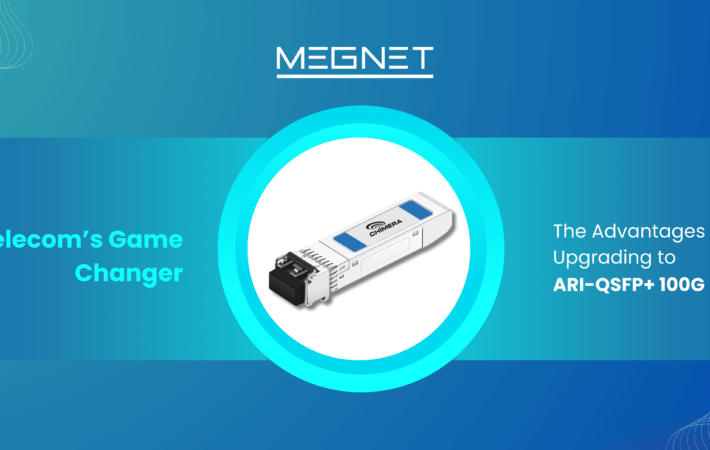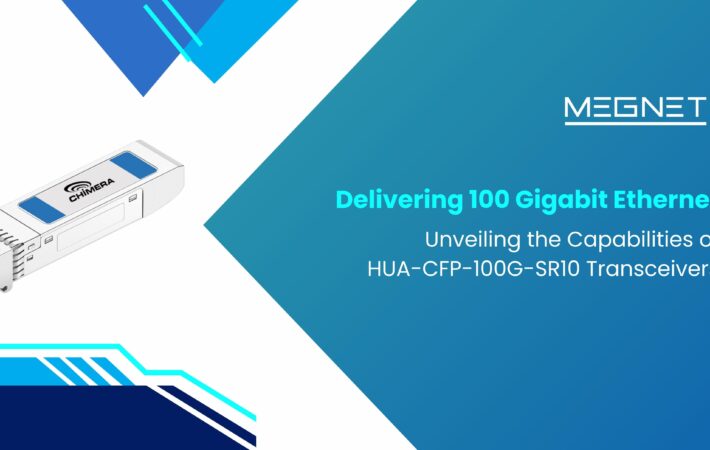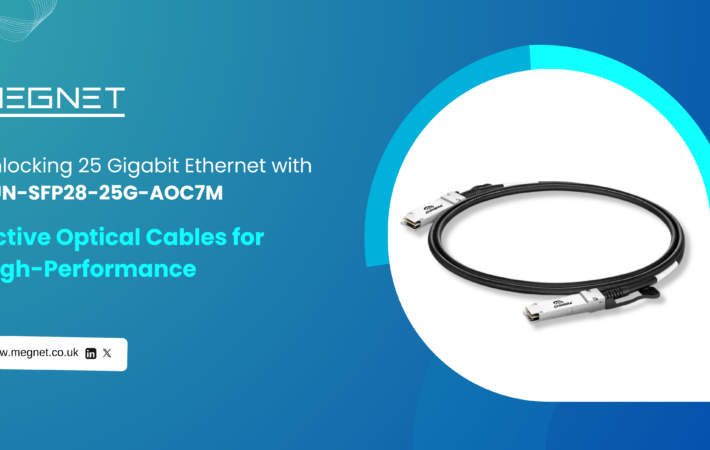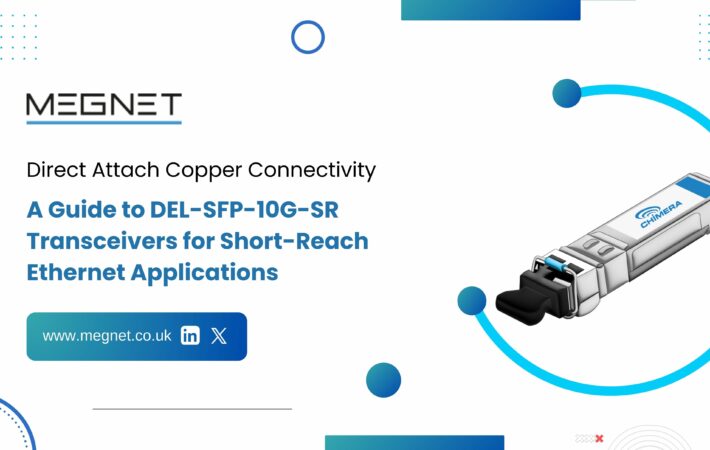
Optimise Network Performance over Long Distances with HPA-SFP-1G-BXU-10 Transceivers
In today’s digital landscape, characterised by relentless data growth and cloud reliance, network performance is the lifeblood of any organisation. Businesses require robust, high-speed connections to facilitate seamless communication, data exchange, and access to critical applications. Here’s where the HPA-SFP-1G-BXU-10 transceiver emerges as a game-changer.
This compact module bridges the gap between network devices and fibre optic cables, enabling high-bandwidth data transmission over extended distances. By understanding its technical specifications, compatibility considerations, and best practices for installation and configuration, network administrators can unlock the full potential of HPA-SFP-1G-BXU-10 transceivers.
This comprehensive guide delves into the world of HPA-SFP-1G-BXU-10, providing valuable insights on optimising network performance with configuration tips and best practices.
Understanding SFP Transceivers and HPA-SFP-1G-BXU-10

SFP transceivers, while seemingly simple modules, encompass a range of functionalities and considerations beyond basic data transmission. Here, we delve deeper into the inner workings of SFP technology and explore the specific characteristics of HPA-SFP-1G-BXU-10 transceivers.
Beyond Electrical to Optical Conversion:
The core function of SFP transceivers is indeed the conversion of electrical signals used by network devices into optical signals suitable for fibre optic cables. However, this conversion process involves more than just a basic light source.
SFP transceivers typically house a Vertical-cavity surface-emitting laser (VCSEL) or a Distributed feedback laser (DFB laser) for efficient light generation.
The choice between these laser types depends on factors like transmission distance and data rate requirements. VCSELs, for instance, offer lower cost and power consumption but are limited in reach compared to DFB lasers.
Digital Diagnostics and Monitoring (DDM):
While not a mandatory feature of all SFP transceivers, some models, including some HPA-SFP-1G-BXU-10 variants, incorporate Digital Diagnostics and Monitoring (DDM) capabilities. DDM functionality allows real-time monitoring of critical operating parameters like laser bias current, optical output power, temperature, and received optical power.
This information proves invaluable for network administrators in proactively identifying potential issues with the transceiver or the fibre optic link. Early detection of performance degradation or component failure enables preventative maintenance and minimises network downtime.
Multi-Source Agreement (MSA) Compliance:
To ensure interoperability between SFP transceivers from different manufacturers and network devices from various vendors, a standardised approach is crucial. This standardisation is achieved through the Multi-Source Agreement (MSA) which defines the electrical, mechanical, and optical specifications that SFP transceivers must adhere to.
Compliance with MSA guarantees a certain level of compatibility, allowing network operators to source SFP transceivers from various vendors without compromising functionality within their existing network infrastructure.
HPA-SFP-1G-BXU-10: Decoding the Specifications
Let’s dissect the specific technical characteristics embedded within the HPA-SFP-1G-BXU-10 designation:
HPA: This prefix might vary depending on the manufacturer but typically doesn’t hold a specific technical meaning. It could simply represent the manufacturer’s brand or product line.
SFP: As established earlier, this signifies the form factor – Small Form-factor Pluggable.
1G: This denotes the data rate capability – 1 Gigabit Ethernet (1.25 Gbps).
BX: This stands for Bi-Directional, indicating that the transceiver operates on two different wavelengths for transmitting and receiving data over a single strand of fibre.
U: This letter can have different meanings depending on the manufacturer, but commonly refers to Unspecified distance, implying the reach distance can vary based on factors like fibre optic cable quality and laser specifications. However, for HPA-SFP-1G-BXU-10 transceivers, the reach distance is typically standardised at 10 kilometres over single-mode fibre.
10: This signifies the maximum reach distance – 10 kilometres.
LC: This refers to the type of fibre optic connector employed – Lucent Connector (LC).
By understanding the breakdown of these specifications, network engineers can make informed decisions when selecting HPA-SFP-1G-BXU-10 transceivers for their specific network requirements.
HPA vs SFP+: Knowing About Both
Selecting the right SFP transceiver for your network is crucial. While HPA-SFP-1G-BXU-10 offers a compelling solution for 1 Gigabit Ethernet applications, SFP+ transceivers cater to significantly higher data rate requirements. Here’s a breakdown of the key distinctions between these two SFP transceiver types:
Data Rate: The most prominent difference lies in data transmission speed. HPA-SFP-1G-BXU-10 operates at speeds of up to 1.25 Gbps, perfectly suited for standard Gigabit Ethernet applications. Conversely, SFP+ transceivers boast data rates of up to 10 Gbps, catering to the demands of high-bandwidth networks.
Reach Distance: Reach distance capabilities can vary depending on the specific SFP+ transceiver model. However, they generally offer shorter reach distances compared to HPA-SFP-1G-BXU-10, which can extend connections up to 10 kilometres over single-mode fibre.
Applications: HPA-SFP-1G-BXU-10 shines in scenarios requiring reliable data transmission over long distances at 1 Gigabit Ethernet speeds, such as connecting buildings within an enterprise network or backhaul applications in carrier networks. SFP+ transceivers, due to their higher data rates, find application in high-performance networks like data centres, server farms, and environments requiring faster data transfer.
Cost: HPA-SFP-1G-BXU-10 transceivers are generally more cost-effective compared to SFP+ due to their lower data rate capabilities. However, the overall cost can be influenced by factors like brand, features, and bulk purchase discounts.
The table below summarises the key differences between HPA-SFP and SFP+ transceivers:

Applications of HPA-SFP-1G-BXU-10
The HPA-SFP-1G-BXU-10 transceiver shines in scenarios demanding reliable data transmission over long distances at 1 Gigabit Ethernet speeds. Here’s a detailed exploration of its ideal use cases:
Enterprise Network Connections: Imagine a large organisation with multiple buildings or campuses spread across a city or even a wider geographical area. The HPA-SFP-1G-BXU-10 transceiver bridges these locations seamlessly, facilitating efficient data exchange between departments, servers, and critical applications. This ensures smooth communication, file sharing, and access to centralised resources across the entire organisation’s network.
Carrier Networks: Telecommunication providers rely on robust backhaul networks to transmit data traffic between core network sites and cell towers. The HPA-SFP-1G-BXU-10 transceiver proves invaluable in such applications. Its ability to transmit data over extended distances using single-mode fibre makes it ideal for connecting remote cell towers or base stations to the core network, ensuring seamless mobile phone connectivity and data services for a wider subscriber base.
Long-Distance Data Centres: In today’s data-driven world, businesses often leverage geographically dispersed data centres for disaster recovery, redundancy, or workload distribution. The HPA-SFP-1G-BXU-10 transceiver bridges the gap between these data centres, enabling real-time data replication, synchronisation, and seamless failover capabilities. This ensures business continuity and minimises downtime in case of any disruptions at a single data centre location.
Metro Area Networks (MANs): Metropolitan area networks connect businesses, government institutions, and educational facilities within a city or urban area. The HPA-SFP-1G-BXU-10 transceiver plays a crucial role in establishing these connections, facilitating high-speed data exchange between various entities. This fosters collaboration, resource sharing, and efficient communication within the metro area.
Point-to-Point Data Links: Beyond the scenarios mentioned above, the HPA-SFP-1G-BXU-10 transceiver caters to various point-to-point data link applications. These links could connect individual buildings within a business park, link remote offices to a central headquarters, or establish secure communication channels between critical infrastructure sites. The transceiver’s ability to transmit data over long distances with minimal signal degradation makes it a versatile solution for diverse point-to-point network requirements.
Configuration and Best Practices for HPA-SFP-1G-BXU-10
Installation:
Here are some of the steps that you should follow for the installation of the HPA-SFP-1G-BXU-10 optical transceivers with your network.
- Ensure the network device is powered down and unplugged before handling the HPA-SFP-1G-BXU-10 transceiver. This is crucial to prevent any potential damage to the device or the transceiver due to electrostatic discharge (ESD).
- Locate the SFP transceiver slot on your network device. Consult the device’s user manual for specific instructions on locating the SFP slot.
- Hold the transceiver by its sides and avoid touching the optical connector at the end.
- Align the transceiver with the SFP slot on the network device, ensuring proper orientation.
- Carefully insert the transceiver into the slot until it clicks into place. Do not apply excessive force.
- Verify the LED status on the transceiver cage. Typically, a lit LED indicates a successful connection and operation. Refer to the transceiver’s datasheet for specific LED status interpretations.
- Reconnect the power cable to the network device and power it on.
Configuration:
The configuration process for HPA-SFP-1G-BXU-10 transceivers can vary depending on the specific network device being used. In some cases, the transceiver may function with minimal, or no configuration required by the switch. However, some devices might necessitate adjustments within the switch settings or network management software. Here’s a general guideline:
- Access the network device’s management interface. This can be done through a web browser or command-line interface (CLI) depending on the device. Consult the device’s user manual for specific instructions on accessing the management interface.
- Locate the SFP transceiver configuration menu. This menu might be labelled as “SFP”, “Physical Ports”, or similar terminology.
- Identify the port associated with the installed HPA-SFP-1G-BXU-10 transceiver. Match the port number with the physical location of the transceiver slot on the device.
- Verify settings and adjust if necessary. Common configuration options might include:
- Speed: Ensure the port speed is set to 1 Gbps to match the transceiver’s capability.
- Duplex Mode: Typically set to “Auto-Negotiate” for automatic negotiation between the switch and the connected device.
- Flow Control: May be enabled for congestion control depending on network requirements.
- Save and apply the configuration changes.
Best Practices for Optimising Performance:
Here are some best practices to ensure optimal performance when using HPA-SFP-1G-BXU-10 transceivers:
Maintain clean fibre optic connections: Regularly inspect fibre optic cable connectors for dust, debris, or damage. Use compressed air canisters designed for cleaning fibre optic components. Avoid touching the connector ends with bare fingers.
Monitor performance metrics: Regularly monitor key performance metrics like signal strength, bit error rate (BER), and receive optical power using the network device’s management tools. This enables proactive identification and troubleshooting of any potential issues.
Keep firmware updated: Ensure the firmware of your network devices and, if applicable, the DOM functionality of the HPA-SFP-1G-BXU-10 transceiver, are updated to the latest versions. This helps maintain compatibility, improve performance, and address any known bugs.
Troubleshooting Common Issues:
Here are some common troubleshooting tips for HPA-SFP-1G-BXU-10 related issues:
Loss of signal: Verify that the transceiver is securely inserted into the SFP slot. Check for any physical damage to the transceiver or fibre optic cable. Ensure the correct settings are configured on the network device as mentioned earlier.
Performance degradation: Monitor performance metrics as mentioned in the best practices section. Clean fibre optic connections if necessary. Consider replacing the transceiver or fibre optic cable if performance issues persist.
Remember: If you encounter any problems beyond your troubleshooting expertise, consult the device’s user manuals, contact the manufacturer’s support, or seek assistance from a qualified network engineer.
Conclusion
The HPA-SFP-1G-BXU-10 transceiver empowers you to bridge long distances in your 1 Gigabit Ethernet network. By following the practices outlined here, you can ensure optimal performance and reliable data transmission.
For superior quality HPA-SFP-1G-BXU-10 transceivers and exceptional customer service, look no further than Megnet, a leading distributor of Chimera optical transceivers. Explore our comprehensive selection and competitive pricing to find the perfect solution for your network needs. Visit Megnet’s website today to learn more and make your purchase!

FAQ's
With proper handling and care, HPA-SFP-1G-BXU-10 transceivers can last for many years. Following recommended practices like keeping firmware updated and avoiding touching the optical connector can contribute to their longevity.
Troubleshooting steps will help determine the source of the problem. If the issue persists after cleaning connections and verifying network device settings, consider replacing the transceiver first. If the problem remains, then the fibre optic cable might be faulty.
Link aggregation functionality depends on the capabilities of the network device the HPA-SFP-1G-BXU-10 is installed in. Consult the device's user manual for details on link aggregation support.
In some cases, minimal configuration might be necessary through the network device's management interface. Refer to the device's user manual for specific instructions.
Network device management tools typically allow you to monitor key performance metrics like signal strength, bit error rate, and received optical power. Some HPA-SFP-1G-BXU-10 models with DOM functionality provide even more detailed real-time performance data.
While many HPA-SFP-1G-BXU-10 transceivers are designed for broad compatibility, it's advisable to check for compatibility with your specific network device before purchase. Consult the manufacturer's website or user manuals.
No, HPA-SFP-1G-BXU-10 transceivers and SFP+ transceivers have different form factors and data rate capabilities, making them incompatible with each other's slots.
You can contact the manufacturer of the HPA-SFP-1G-BXU-10 transceiver or the vendor from whom you purchased it. Additionally, the network device manufacturer might offer support for troubleshooting transceiver compatibility issues.
No, HPA-SFP-1G-BXU-10 transceivers are specifically designed for Gigabit Ethernet applications. Fibre Channel SANs require different protocols and typically use FC (Fibre Channel) transceivers.
Cascading multiple SFP transceivers is generally not recommended due to potential signal degradation and complexity. It's advisable to explore alternative solutions like high-power SFP transceivers or WDM (Wavelength-Division Multiplexing) technologies for extending reach beyond 10 kilometres.








Leave a comment
Your email address will not be published. Required fields are marked *